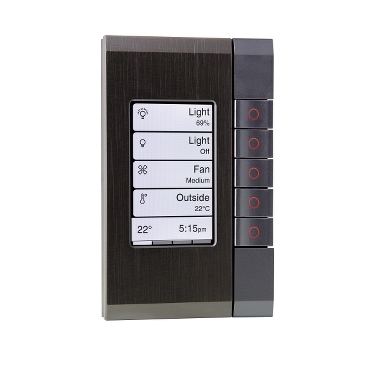1. EXECUTIVE SUMMARY
- CVSS v3 6.5
- ATTENTION: Exploitable remotely/low attack complexity
- Vendor: Schneider Electric
- Equipment: C-Bus Toolkit
- Vulnerability: Missing Authentication for Critical Function
2. RISK EVALUATION
Successful exploitation of this vulnerability could allow an attacker to enable remote access to the system.
3. TECHNICAL DETAILS
3.1 AFFECTED PRODUCTS
The following versions of C-Bus Toolkit are affected:
- C-Bus Toolkit Versions 1.15.8 and prior
3.2 VULNERABILITY OVERVIEW
3.2.1 MISSING AUTHENTICATION FOR CRITICAL FUNCTION CWE-306
An improper authentication issue exists and could allow an attacker to use a crafted webpage that can enable remote access to the system.
CVE-2021-22784 has been assigned to this vulnerability. A CVSS v3 base score of 6.5 has been calculated; the CVSS vector string is (AV:N/AC:L/PR:N/UI:R/S:U/C:N/I:H/A:N).
3.3 BACKGROUND
- CRITICAL INFRASTRUCTURE SECTORS: Commercial Facilities
- COUNTRIES/AREAS DEPLOYED: Worldwide
- COMPANY HEADQUARTERS LOCATION: France
3.4 RESEARCHER
rgod working with Trend Micro’s Zero Day Initiative reported this vulnerability to CISA.
4. MITIGATIONS
Schneider Electric recommends users to update to Version 1.15.9 or later. Note: A reboot will be needed after the update.
If users are unable to update, Schneider Electric recommends the following workarounds:
- Use an allow list for this application
- Turn on the computer’s firewall
- Use an antivirus program
- Secure the computer to prevent unauthorized personnel from accessing the computer
See Schneider Electric’s security notification SEVD-2021-194-04 for more information.
CISA recommends users take defensive measures to minimize the risk of exploitation of this vulnerability. Specifically, users should:
- Minimize network exposure for all control system devices and/or systems, and ensure that they are not accessible from the Internet.
- Locate control system networks and remote devices behind firewalls, and isolate them from the business network.
- When remote access is required, use secure methods, such as Virtual Private Networks (VPNs), recognizing that VPNs may have vulnerabilities and should be updated to the most current version available. Also recognize that VPN is only as secure as the connected devices.
CISA reminds organizations to perform proper impact analysis and risk assessment prior to deploying defensive measures.
CISA also provides a section for control systems security recommended practices on the ICS webpage on us-cert.cisa.gov. Several recommended practices are available for reading and download, including Improving Industrial Control Systems Cybersecurity with Defense-in-Depth Strategies.
Additional mitigation guidance and recommended practices are publicly available on the ICS webpage on us-cert.cisa.gov in the Technical Information Paper, ICS-TIP-12-146-01B–Targeted Cyber Intrusion Detection and Mitigation Strategies.
Organizations observing any suspected malicious activity should follow their established internal procedures and report their findings to CISA for tracking and correlation against other incidents.
CISA also recommends users take the following measures to protect themselves from social engineering attacks:
- Do not click web links or open unsolicited attachments in email messages.
- Refer to Recognizing and Avoiding Email Scams for more information on avoiding email scams.
- Refer to Avoiding Social Engineering and Phishing Attacks for more information on social engineering attacks.
No known public exploits specifically target this vulnerability.
Source:


Stay connected